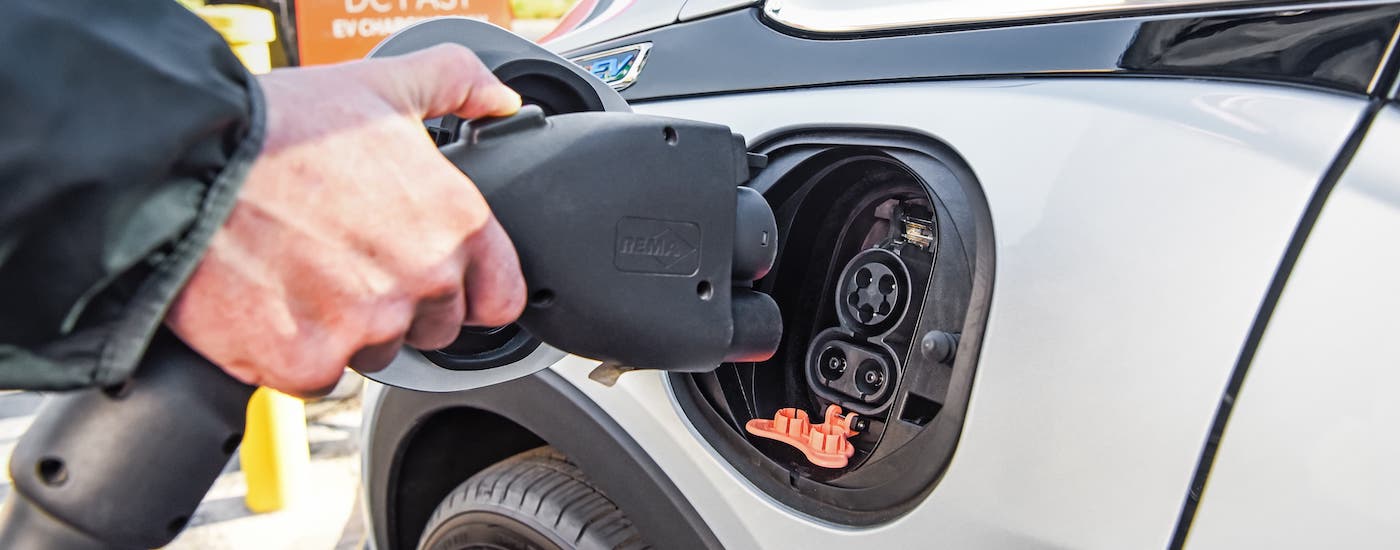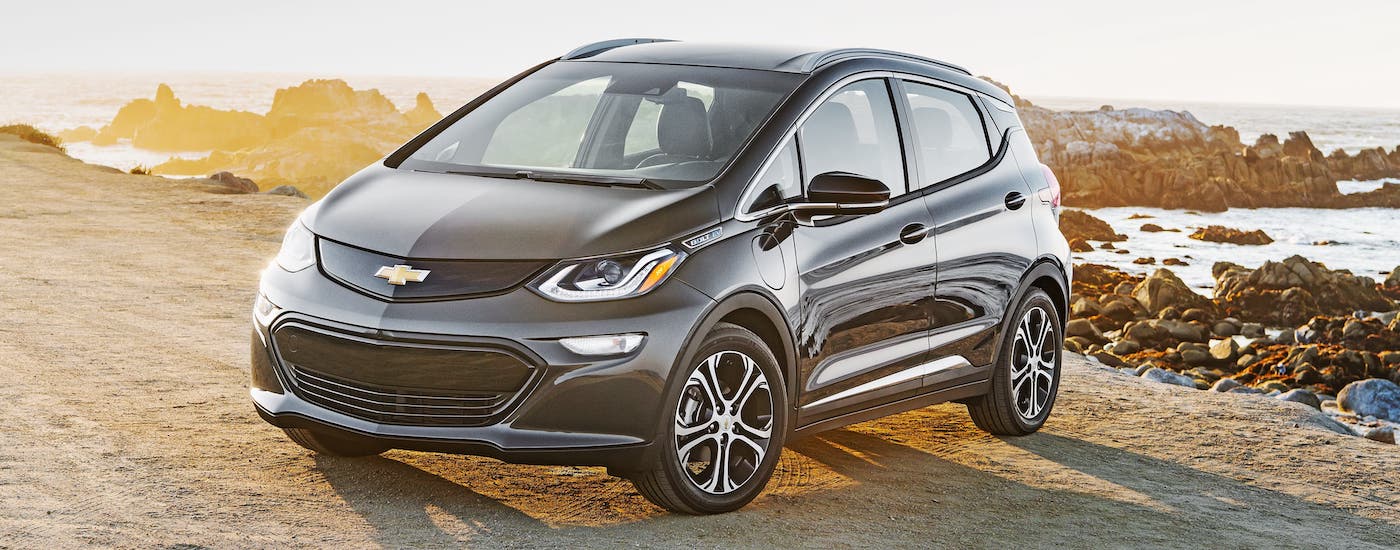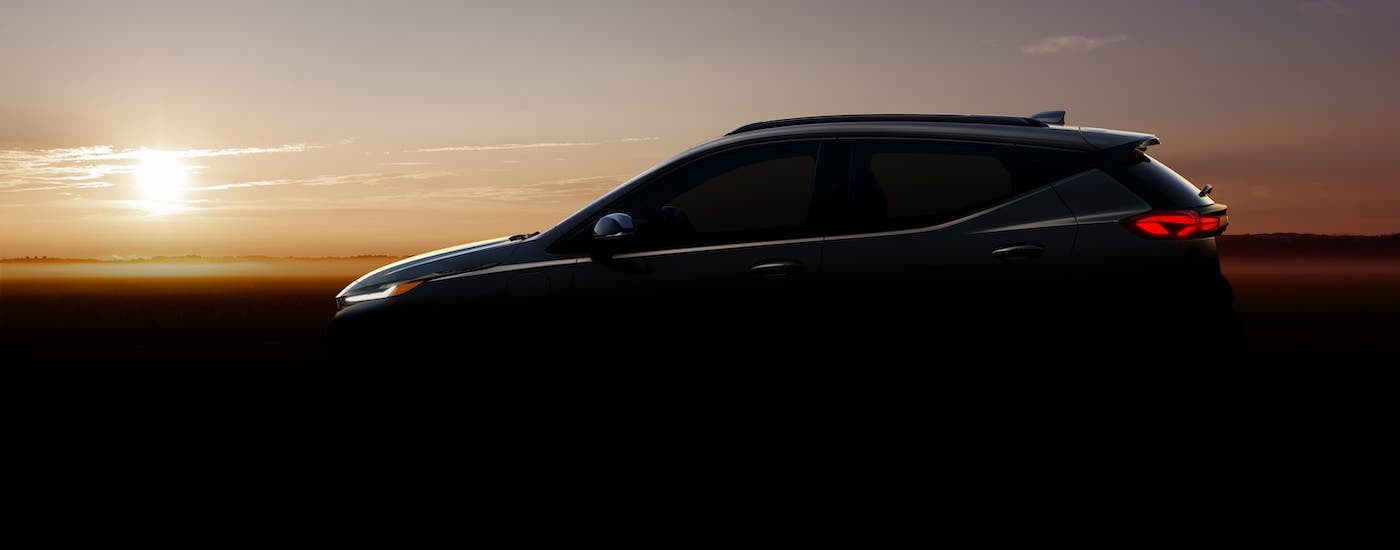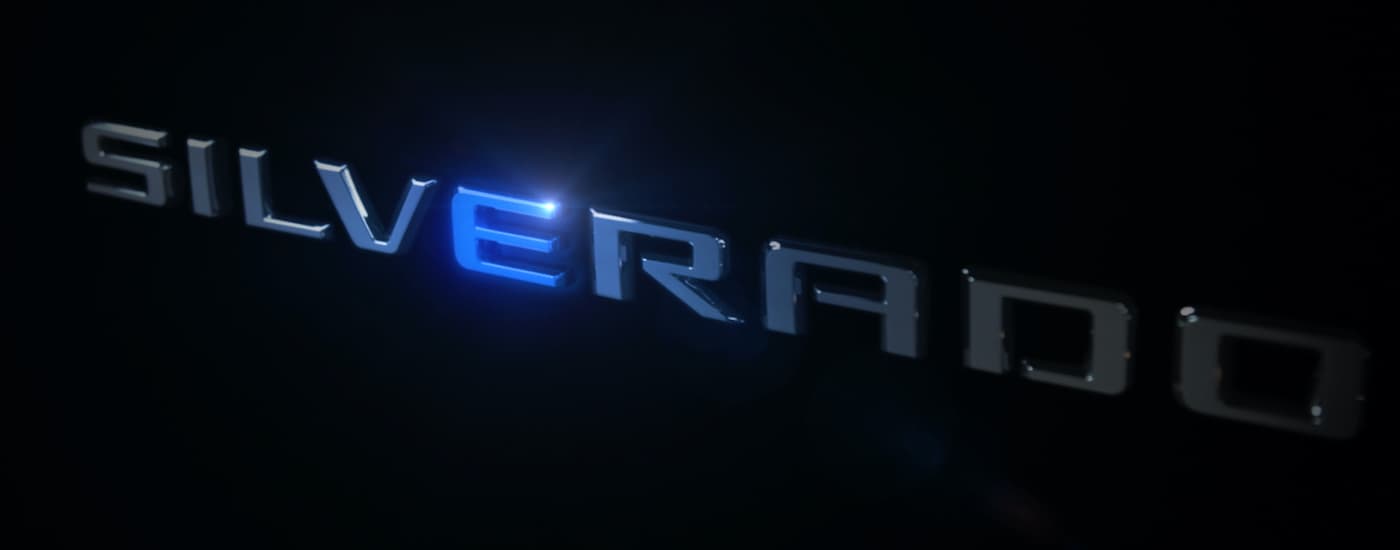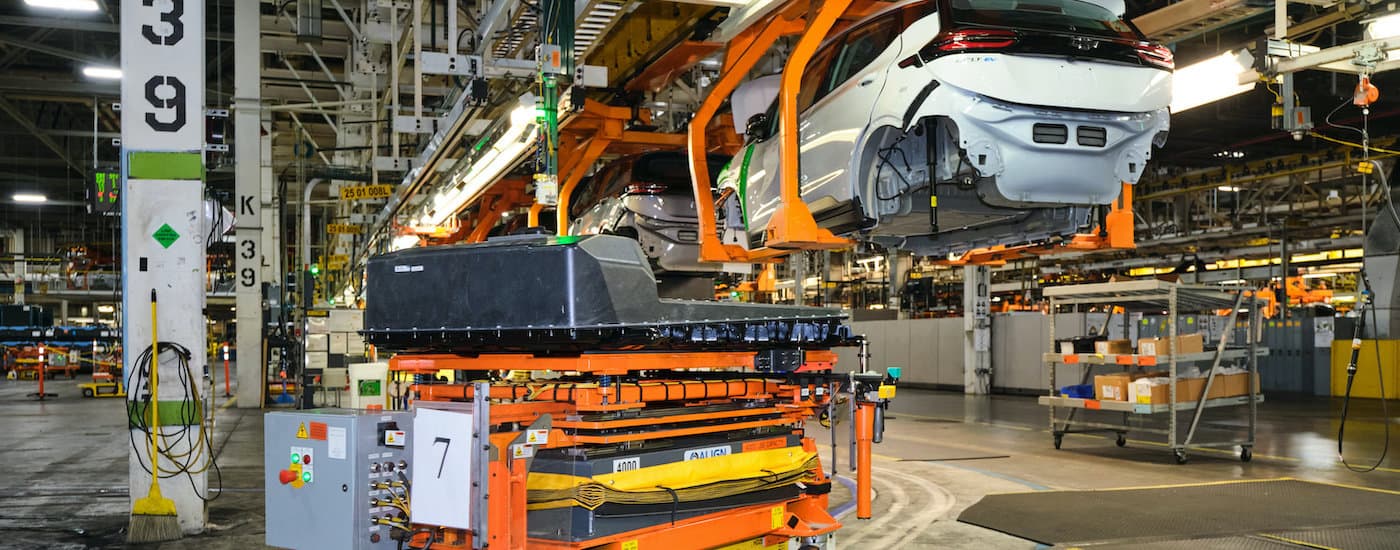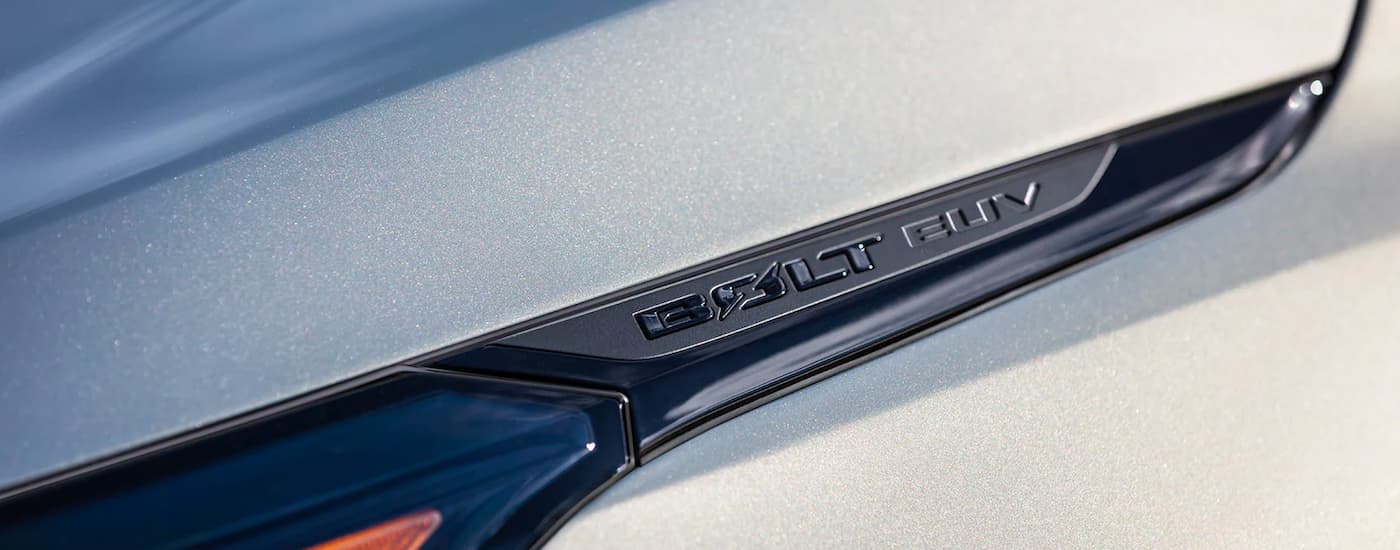Chevy EV
Electric Vehicles, like the Chevy EV line, are starting to make their way to the top of the automotive industry. In theory, we love them. The idea of never pumping gas in the rain or cold is enough to sell many drivers on the concept, but there are many other stellar selling points behind electric vehicles. Low maintenance. No emissions. A cleaner planet and a boost to your monthly transportation budget are both delightful promises.
However, the electric vehicles (or EVs) that we were first exposed to came up short of the promise. Some models were short on range, while other models were short on driveability, with sluggish acceleration and handling. There’s also the matter of battery packs taking up the trunk and backseat space, making the ride unenjoyable for anyone but the driver and front passenger. However, that is no longer the case with EVs. Like many companies, Chevrolet has taken their commitment to drivers and to our planet very seriously, working over several decades to perfect the electric vehicle so that it is practical, driveable, affordable, and most of all, fun.
History of Chevy Innovation
While many drivers think of EVs and hybrid vehicles as a trend that caught on in the 1990s and early 2000s, the truth is that Chevrolet has been working on an electric vehicle behind the scenes for decades. One of Chevy’s earliest and most notable forays into the world of EVs came in 1964, when the Electrovair, or electric Corvair, was developed. Powered by an AC induction motor and a 450-volt silver-zinc battery, the first Electrovair managed 90 horsepower. While it clearly wouldn’t win any modern speed records, this prototype convinced Chevy that developing an electric version of a current model was possible.
The Electrovair II hit the media in 1966. In just two years, Chevy had managed to upgrade their initial trials to upgrade the power to 532 volts, resulting in 115 horsepower. The Electrovair II was capable of traveling up to 80 miles per hour and could sustain a range of 40 to 80 miles using silver-zinc battery power. By this time, Chevrolet knew that the EV was a viable option, but further research and development was required to fine-tune the concept. The 1977 Electrovette combined the popular Chevette coupe and brand new nickel-zinc battery technology that helmed ongoing EV and hybrid research for Chevrolet through the 1980s.
In 2007, Chevy announced the Volt concept car, powered by the Voltec electric propulsion system. Voltec combined battery power with a gasoline-powered engine to amplify the driving range to a reasonable 379 miles. Additionally, the Volt could be recharged using a standard 110-volt household outlet, taking some of the hassles out of owning a vehicle that needed to be plugged in. The Chevy Volt officially hit the market in 2011, and production continued until 2019.
The Chevy Spark was designed as a gasoline-powered micro-compact car, and in 2014, Chevy released an all-electric version. While the Spark model continued, the EV version was phased out in 2016, perhaps to make room for Chevy’s most widely available and celebrated EV to date: the Chevy Bolt. Released in 2017, the Chevy Bolt combined a realistic all-battery range of 200 miles and beyond, practical at-home charging options, and intuitive technology that helped drivers understand their power usage and levels. Finally, decades of Chevy innovation had paid off.
Looking Towards the Future of Chevy EVs
The Bolt continues to hold pride of place within the Chevrolet family as an EV that has gained the approval and appreciation of the American driving public. In late 2020, Chevy announced that it would continue to expand upon the Bolt’s successful platform, adding an EUV to the brand’s 2022 lineup. “EUV” is a brand new term that combines electric vehicle technology with SUV styling. While the traditional Bolt EV hatchback design is well-loved, the customer base wants SUVs, so Chevy is delivering with the larger Bolt EUV.
Chevy has also announced that the latest in driver assistance technology will be aboard the Bolt EUV, as it will include the exciting Super Cruise feature. Currently available as an option on some luxury GM vehicles such as Cadillac, Super Cruise is an industry-first hands-free driving system. It pairs a database of over 200,000-miles of recorded US and Canada freeway data with a camera that senses whether drivers are paying attention to the road. Armed with sensors placed around the vehicle, it can safely change lanes and follow the highway to your destination with intelligent technology.
Chevy has also revealed that an EV truck will be added to the lineup, with a target production date of 2025. Early concept details indicate that it may be similar to the Silverado, with an extended battery range that can provide enough power to copy the workload of its fuel-powered counterpart. While it may seem that electric vehicles have been a long time coming, we are on the cusp of a new era with the Chevy EVs of the future.
The Expansion Of EVs
If you are looking for a Chevy EV, the great news is that your EV possibilities have expanded even further. Not only can you get an EV SUV, car, or hatchback, but trucks are now available too. The Chevy Silverado EV, for example, can make it hundreds of miles on one full charge, all while producing tons of horsepower. This is major progress from the Silverado’s 1999 debut when it only got 17 miles per gallon in the city. What we’ve thought to be the future of trucks is no longer “the future” - it’s now.
To celebrate this fantastic news, we’ll talk about how the Chevy Silverado EV is making commuting much more affordable and environmentally friendly. We’ll also look at why this new technology is so important and how it’s affecting the automotive industry for the better. Let’s take a close look at Chevy’s history and how GM’s Factory ZERO is changing our daily driving experience.
Some Silverado History And Facts
The Chevy Silverado first debuted as a trim of the Chevy C/K truck before it became its own model. The first Silverado came out in 1999, and as quickly as 2002, the Silverado could tow a max weight of 10,300 pounds with the proper trailering equipment. The first-generation Chevy Silverado even came with Tow/Haul mode, which is something that other brands didn’t start using until much later. It didn’t take long for Chevy to start improving the Silverado’s specs, and this improvement only increases with time.
There are several reported instances where Chevy Silverado models are still going strong after one million miles! This isn’t just a one-time occurrence either. One man from Missouri has both a Silverado and a GMC Sierra that have incredibly high mileage. The Sierra has over 500,000 miles on it, while the Silverado has over a million miles. They’re both diesel models, and he doesn’t just use them to commute, either. He hauls RVs daily with both models, and they’re still going strong. The Chevy Silverado that he owns is a 2007 model, which just goes to show how Chevy has been going strong from the start.
A separate occurrence of this happened to a couple who owned a 2006 Chevy Silverado 3500 model. As long as you take good care of your Chevy Silverado models, you’ll be surprised at how long you can keep them running.
How the Silverado Has Changed From the First-Generation to the EV
It’s obvious that the Silverado has been strong from the start, but its style has definitely changed over the years. When it first debuted, the Silverado had a simple design with regular cab and extended cab options. It also came with a sportside bed option, which is more commonly known as a stepside bed, and the classic fleetside bed option. This lasted until 2005, when these designs were deemed as less practical and durable. From then on, fleetsides have dominated the Silverado design.
Now that the EV is here, it follows closely with the Silverados modern design, but it offers its own unique twists. It’s built on GM’s Ultium Platform, which is a flexible design that can handle almost any type of model. The Ultium Platform meshes with the Ultium battery design, making it so that battery stacking is simple and easy. The batteries take up less room this way, giving more room for the vehicle itself. This is what makes the Silverado EV possible.
The Factory ZERO
Rather than treating EVs as a side project, Chevy decided to take things a bit further. GM’s old Detroit Hamtramck Plant has been fully renovated into Factory ZERO and is now being used for electric models only. Since this factory can focus solely on EV development and production, Chevy’s EV models get the highest level of attention. The goal is not to create EVs alongside gas-powered vehicles but to shape the future by making electric models the most feasible options, breaking them out of their alternative option category.
How Else Is GM Progressing With Alternate Fuel Technologies?
GM isn’t simply creating new EV models and leaving it at that. Instead, they’re partnering with several other brands and services to help make EVs more realistic. For example, GM is partnering with Uber to give Uber drivers discounts on EV models. They’re also partnering with Navistar to make transportation more eco-friendly. GM understands that once we make delivery services more eco-friendly, emissions will really start to go down.
Further, GM is partnering with EVgo to add in over 2,700 public fast-charging stations. The main concern that most drivers have with electric models is running out of charge. GM wants to see charging stations become as popular as gas stations are, and they’re going out of their way to ensure that happens. GM’s Energy Assist app will help users find these charging stations, displaying their locations so that no one ever has to worry about running out of charge. Simply route your path based on available charging stations, and you’re good to go. Overall, GM is working to make sure that their EV models are not only accessible to purchase but to use as well.
Why the Silverado EV Is Such a Huge Accomplishment
Electric vehicles have been around since the 1890s when William Morrison developed an electric car with a top speed of 14 mph. While this was impressive at the time, it obviously couldn’t get anyone very far. But over time, electric vehicles began to become more and more realistic. Now, having an electric car is considered normal for the most part. However, when we picture electric vehicles, we often see tiny little cars that don’t offer much protection. This is where the Silverado EV changes the game.
Now that we are getting electric trucks, we’re not only getting more durable and sustainable electric models, but we’re gaining more capable models. Chevy’s Silverado EV is capable of towing and hauling just like gas and diesel-powered trucks are. Further, thanks to the Ultium Platform, electric vehicles can now offer far more cargo and passenger space. As a whole, the Chevy EV’s technology has opened up a whole new world of possibilities within the automotive industry.
It's Time to Try an EV
The time has come for drivers of all types of vehicles to get excited for the electric future. As more and more EV models start to come out, anticipation is growing and change is occurring. With the release of the Chevy Bolt EUV and the promise of more electric models to come soon, Chevy is showing us all where the future of the automotive industry is heading. It is time to seriously start considering an electric vehicle for your next purchase and how it can fit into your life.
Whether you’re looking forward to the updated Bolt EV, ready to take the plunge with a brand new EUV, or eagerly awaiting the electric truck, it's easy to see driving in the Houston area is about to become much more efficient. The future is electric, and Chevy is at the forefront. We are excited to see what other electric models Chevy will be rolling out in the coming years. If you want to learn more, give us a call or visit our dealership today.
About Parkway Family Chevrolet
Parkway Family Chevrolet is the Texas Chevy dealership for you. We offer unique services that you can’t find at just any regular dealership. For example, our Parkway Advantage is free to you with no hidden charges. Once you buy a vehicle through us, you gain instant access to the Parkway Advantage. So, what is this mysterious “advantage,” you ask?
Thanks to our Parkway Advantage, you’ll gain access to a lifetime supply of loaner cars. When you need to get your vehicle serviced, but you don’t have time to wait around, and your friends and family can’t help you out, we’ll loan you one of our fresh models to get you from point A to point B. In addition to this, since our state requires annual inspections, we’ll get you out of those costs, giving you yearly inspections for free.
The Parkway Advantage also comes with free car washes for six months after your purchase. We also include everything in your listed price, so once we tell you what you owe, you can count on owing that much and not a dime more. If this sounds like a good deal to you, visit Parkway Family Chevy today to ask about the Chevy Silverado EV. We’re looking forward to helping you find your dream model.



